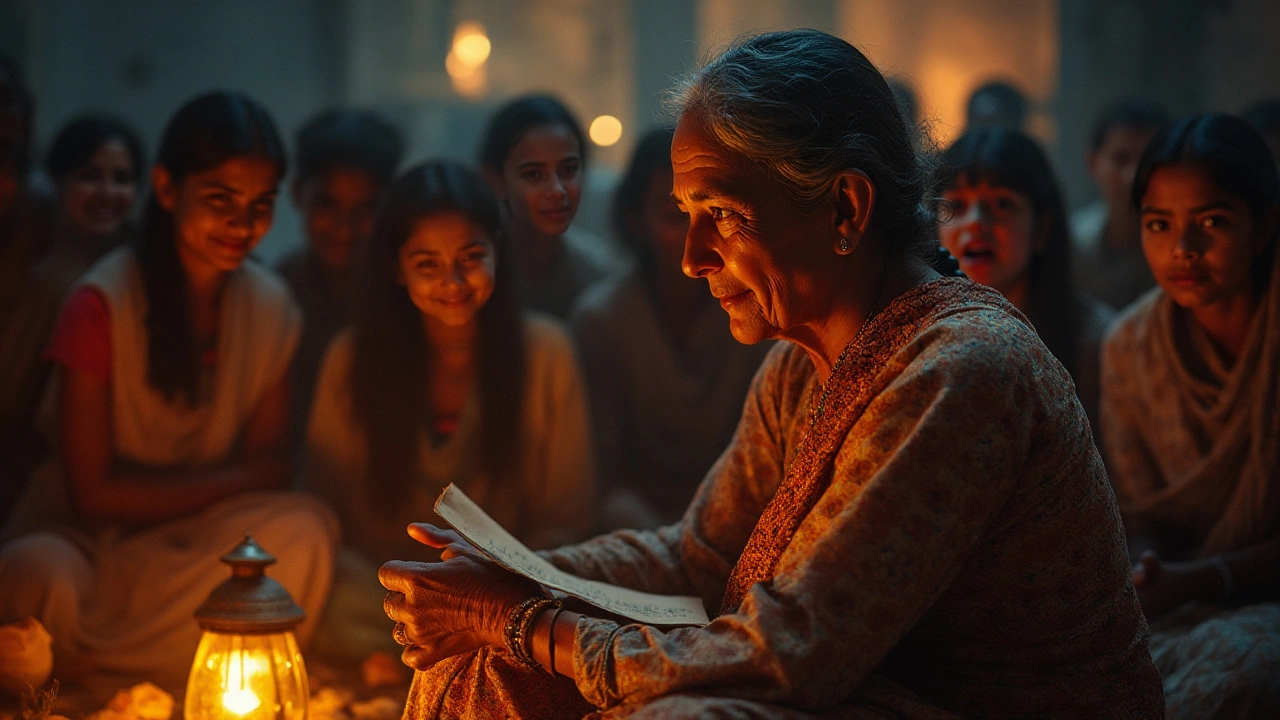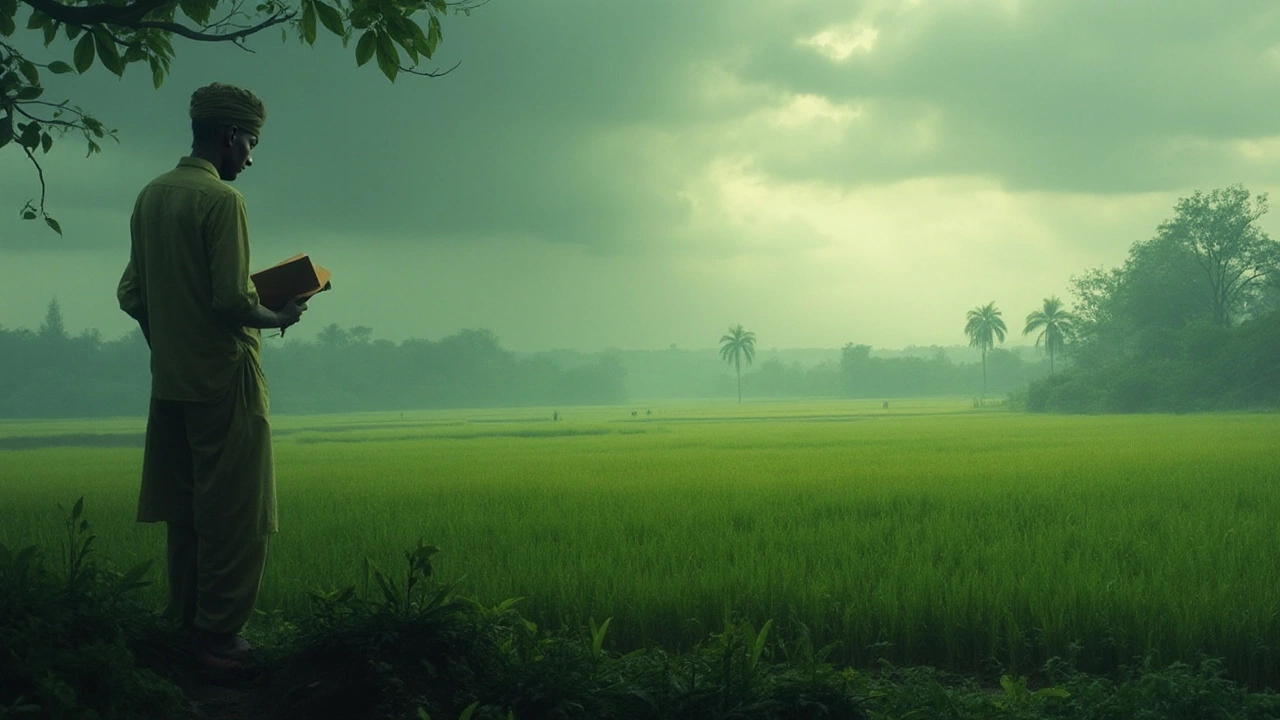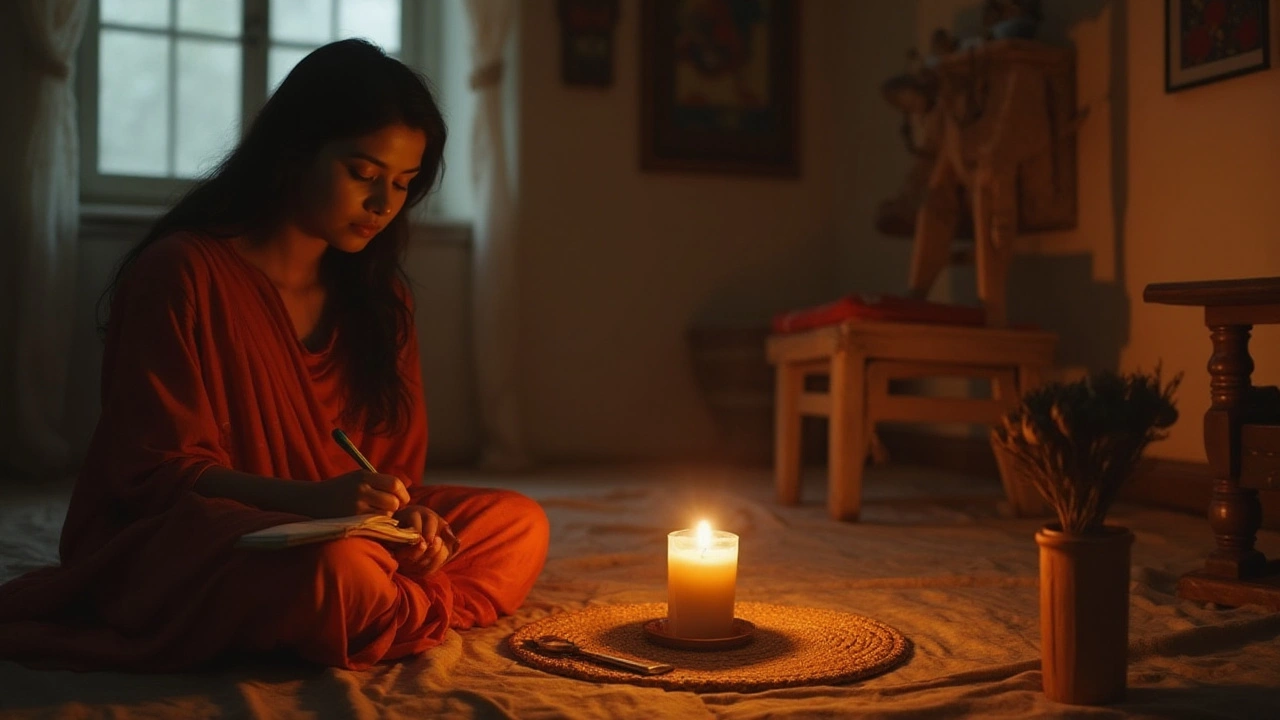
In the vast landscapes of Indian poetry, a mysterious poem encapsulating grief stands out, weaving emotions into words that touch the very core of human experience. This exploration will take you through the intricacies of the poem, reflecting on its potential origins and the timeless appeal it holds.
With the heart sequestered in sorrow, poetry often serves as a balm and a beacon. The grief poem is a testament to the power of words in expressing deep emotional truths. By understanding its cultural references and hidden layers, we come closer to appreciating poetry's profound impact.
Through the gentle unraveling of its verses, this article aims to shed light on the forces shaping this poignant piece. By connecting personal loss with shared cultural memories, the grief poem offers solace and contemplation to its readers, new and old.
- Origins and Historical Context
- The Poem's Emotional Resonance
- Cultural Influences and Traditions
- Decoding the Poet's Voice
Origins and Historical Context
Tracing the roots of the grief poem demands a journey through the deep realms of Indian poetic traditions, which have been integral to the subcontinent's heritage for millennia. Indian poetry, thriving amidst diverse cultures and languages, offers a myriad of expressions channeling the universal sensations of sorrow and mourning. The exploration of sad poetry is embedded in ancient texts, where the elegant simplicity of verse was employed to resonate with readers across eras. The world's earliest known epic literature, the Ramayana and Mahabharata, each configured the motif of grief in distinct forms, crafting stories of profound loss and redemption.
A significant era that influenced Indian sad poetry was the medieval period, marked by the prolific works of Bhakti and Sufi poets. Their verses, often laden with grief, explored the themes of divine longing and human anguish, serving as an emotional conduit for audiences of the time. It wasn't uncommon for these poets, such as Kabir and Mirabai, to intertwine personal grief with communal narratives, creating a deep sense of empathy and reflection.
"Life is a battlefield; shrouded in inevitable sorrow, yet poetry transmuted this sorrow into beauty." — AnonymousThese sentiments reverberate through the ages, reflecting a resilience in the face of adversity.
The colonial period added another layer to the expression of grief in Indian poetry. Amidst political upheaval and struggle for independence, poets like Rabindranath Tagore and Faiz Ahmed Faiz sculpted their verses to voice the sorrows of a nation, evoking powerful imagery of loss and longing for freedom. The amalgamation of Eastern and Western poetic styles created unique expressions, enriching the landscape of Indian poetry. The independence movement catalyzed an epoch of poetic renaissance, birthing works that echoed the pain of past and present realities.
As we delve into the more contemporary expressions post-independence, the evolution of the grief poem continues to reflect changing societal dynamics. Modern poets infuse their work with innovative styles and themes, drawing from personal narratives and social commentaries. However, the heart of the sad poetry remains unvarnished, capturing the essence of human grief in its rawest form. The seamless thread of history interconnecting these diverse epochs provides a rich tapestry of emotional articulation serving as living chronicles to the past.
By examining early Sanskrit and Tamil literature in conjunction with medieval Bhakti and Sufi contributions, alongside the revolutionary voices of the 19th and 20th centuries, we see the continuous lineage of sorrow expressed through poetry. This exploration of the past isn't just to trace its origins but to understand how this particular genre of poetry manages to stay both timeless and intimate. In the end, the journey through the origins and historical context reveals that while languages and forms may shift, the cathartic power of the grief poem remains eternal, inviting readers to both mourn and marvel at its poignant beauty.

The Poem's Emotional Resonance
A grief poem has an incredible way of reaching into the soul, speaking directly to those tender places within us that resonate with loss. The emotional depth these words convey transcends language barriers, whispering the universal truths of sorrow. Across generations, readers have found solace in the verses that encapsulate personal loss, allowing themselves to sit with their emotions while feeling understood by the poet's empathic reach. The ability of the poet to translate emotions into a shared experience is powerful; it feels as though the words themselves carry the weight and relief of ancient rituals for mourning.
The craft of creating an emotional resonance in poetry lies partly in the careful selection and juxtaposition of words. In the tapestry of a grief poem, every line is woven to impact the reader's heart, often employing metaphors that evoke nature, seasons, or historical events to illustrate the ebb and flow of human grief. For instance, comparing the fragility of life to autumn leaves that fall tenderly to the ground not only speaks of the beauty and inevitability of loss but also envelops the reader in a silent, poignant understanding—creating an emotional dialogue without the need for direct conversation. As Ghalib, the renowned Urdu poet, once said, it is in "the silences between the words that we find true understanding."
Many Indian poetry aficionados appreciate the cultural nuances that add layers to these poems, often drawing from spiritual and philosophical traditions which view grief not as a singular emotion but as a complex tapestry of acceptance and remembrance. In the multifaceted society of India, the communal aspect of experiencing grief is inherent in the structure of these poems. For example, traditional Indian expressions often blend individual emotions with collective history, creating an empathy bridge that resonates deeply with society's traditions of communal grieving and celebration of life.
At the heart of the poem's resonance lies a timeless quality that helps it adapt to various contexts and interpretations. Some consider this an echo of ancient Indian performance arts, where storytelling through music, dance, and poetry was integral to cultural expression. Research indicates that people often turn to such deeply reflective pieces during personal milestones, such as anniversaries of loved ones. According to a survey conducted by the Centre for the Study of Developing Societies, nearly 57% of respondents acknowledged reading poetry as a means of understanding personal emotions, particularly during times of grief. This intrinsic potency makes the sad poetry stand out, offering a lens through which people can view their own narratives framed against the broader strokes of life and fate.

Cultural Influences and Traditions
The heart of Indian sad poetry is deeply woven with the threads of cultural influences and traditions that have shaped its existence. The saga of the grief poem is no exception, as it reflects a deep-seated connection to the variegated tapestry of Indian culture. Ancient traditions, spiritual beliefs, and regional narratives often embody a dual essence of sorrow and solace, providing a platform where human emotions are both celebrated and mourned. The poem emerges against this backdrop, capturing the soul of a nation steeped in emotional diversity. From the mythical stories found in epics like the Mahabharata and Ramayana, which resonate with tales of loss, valor, and redemption, poetry acts as a bridge between the ancient and the contemporary. The influence of such rich narratives allows the Indian poetry tradition to encompass a wide range of emotions, with grief being a predominant theme that resonates through generations.
Music and dance, too, have a powerful influence on the emotions embedded in poetry. The classical dance forms like Bharatanatyam or Kathak often enact stories of divine love and tragic separation, fostering a blending of rhythm and melancholy that is mirrored in poetic expressions. Language and dialect reflect the diversity of India, with each region offering unique linguistic flavors. The grief poem evolves within this milieu, adapting its voice to transcend linguistic barriers and evoke universal emotions.
Regional Variations and Religious Symbolism
Diverse cultural paradigms in India mean that expressions of grief are articulated differently, influenced by regional beliefs and practices. In some regions, like Bengal, poetry often reflects the bittersweet melancholy associated with ‘Bengali bhadralok’ (educated middle-class) ethos. In others, like Tamil Nadu, the poems can capture the essence of ‘bhakti’ (devotion) intertwined with a yearning that borders on grief. This cultural mosaic is significant as it provides the backdrop against which the poem stands, rich in texture and depth. Aspects of religion also play a crucial role in shaping the tone and tenor of the poem. Hinduism, with its cyclical view of life and death, and Buddhism’s emphasis on detachment and suffering, are key paradigms that potentially inspire poets.
"Sadness is but a wall between two gardens." ― Kahlil Gibran
This rich cultural and religious symbolism, entrenched within these grief poems, not only speaks to the sorrows of parting and longing but also opens doors to spiritual introspection and healing. Undoubtedly, such cultural influences infuse the poem with layers of meaning and relevance, making it timeless and significant across time and geography.

Decoding the Poet's Voice
Deciphering the voice behind a poem is akin to peering into the essence of the poet's heart and mind. In the case of this enigmatic grief poem, understanding the poet's emotional state and intent becomes crucial to fully appreciating the verses. Indian poetry, especially, is often steeped in personal and cultural layers that invite a deep dive beyond the surface of the text. The way the words flow, the rhythm they capture, and the images they evoke are all integral elements that reveal the poet's emotional landscape. Often, this poetic voice emerges from a profound personal loss or longing, something that resonates universally despite its specific ties to Indian cultural nuances.
Examining the voice in sad poetry, particularly when addressing themes like grief, involves recognizing the delicate balance between despair and hope. The poet skillfully manages to transport readers to an emotional realm, where pain transforms into a shared human experience, dissolving the boundaries of individual sorrow. The sound of the poet's voice might echo with the lamentations of countless others who've been in similar places of solitude, but its uniqueness lies in its portrayal of a singular, yet relatable, journey through anguish. Remember, the voice integrates regional dialects, folk stories, and local traditions, imbuing a rich sense of place that serves to anchor the emotions in a tangible cultural context.
Adding to the layers of complexity is the use of symbolism and metaphor, tools that poets often wield to shroud direct expressions of grief in a veil of narrative beauty. By choosing to express grief subtly and poetically, the poet gives the reader room for interpretation, allowing them to find their echoes of sorrow within the text. As you untangle these metaphors, there's a recognition of not just individual loss but a collective agreement with mortality's capricious hand. According to an interview with notable Indian poet Gulzar, often poetry becomes the "mirror that reflects the inexpressible emotions of a poet’s soul while simultaneously being a canvas for every reader's inner world."
This emotional transcription through language is further enhanced by the technical prowess displayed in the poem’s structure. The rhyme scheme, meter, and form are not merely artistic choices but are deliberately crafted to evoke an introspective mood. The rise and fall of syllables mirroring the undulations of emotions experienced in the grieving process. At times, the voice may break from conventional forms, embracing free verse, which allows the poet's raw emotions to flow unencumbered. This creative freedom can be seen in many celebrated works of Indian sad poetry, where traditional forms meet contemporary styles, weaving a dynamic tapestry of old and new.
The poet's voice, in essence, becomes a vessel for catharsis, not just for the poet but equally for readers. In decoding this voice, we find paths leading back to our visceral connections with grief and healing. It's a reminder that poetry serves as a sanctuary, bridging the silent spaces between loss and the resilience to move forward. So while the identity of who wrote the grief poem remains a mystery, its voice—a powerful, resolute testament to human endurance—resonates across time and culture, comforting and challenging us in equal measure.